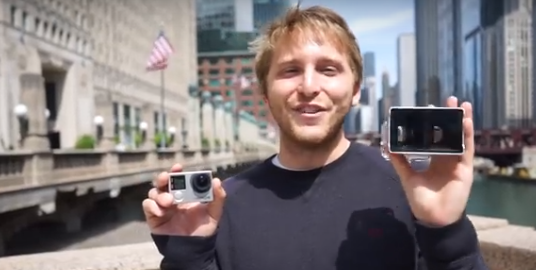3D was the laughing stock of the TV industry a few years ago. Despite all the ridicule and lack of content hurled at it, though, all of those 4K televisions flying off the shelves can support 3D. In addition, new TVs in development promise improved quality 3D without glasses.
For those who’d like to take advantage of the second (or extended first) coming of 3D television using today’s devices, Tel Aviv-based Moebius Industries has created Stesco. The clever pocket-sized bracket holds two iPhones adjacent so that they can each capture part of a stereoscopic image Its price is so low that the campaign can be forgiven for its gratuitous use of selfie sticks in its videos. The company offers a free app that stitches together the two photos or video streams after establishing a communications link, presumably via the Lightning connector. Moebius seeks to raise £30,000 (about $44,000) by April 13. Stesco costs £8 (about $12) for either the iPhone 5(S) or 6 and should ship in July.
While iPhone photography add-ons have proliferated, most have focused on the convenience of the device that happens to be in your pocket. Unfortunately for Stesco, few people carry two iPhones in their pocket. And even if you have a friend willing to lend you one, it must be of the same generation to work to the product. While it produces smaller images and costs more than three times as much, Poppy 3D does the 3D capture trick with one iPhone. However, for partners, families, or amateur video crews who have easy access to a matched set of Apple smartphones, Stesco is a ridiculously inexpensive way to create stereoscopic photos and video.
 Vitrima is a stereoscopic 3D lens that connects to a GoPro camera via the camera’s standard housing that comes pre-attached to the lens. The lens transforms the camera into a 3D recording device without the need for another camera or special software. It uses mirrors to create the 3D natively in the camera. Another nice feature is that Vitrima is waterproof.
Vitrima is a stereoscopic 3D lens that connects to a GoPro camera via the camera’s standard housing that comes pre-attached to the lens. The lens transforms the camera into a 3D recording device without the need for another camera or special software. It uses mirrors to create the 3D natively in the camera. Another nice feature is that Vitrima is waterproof.